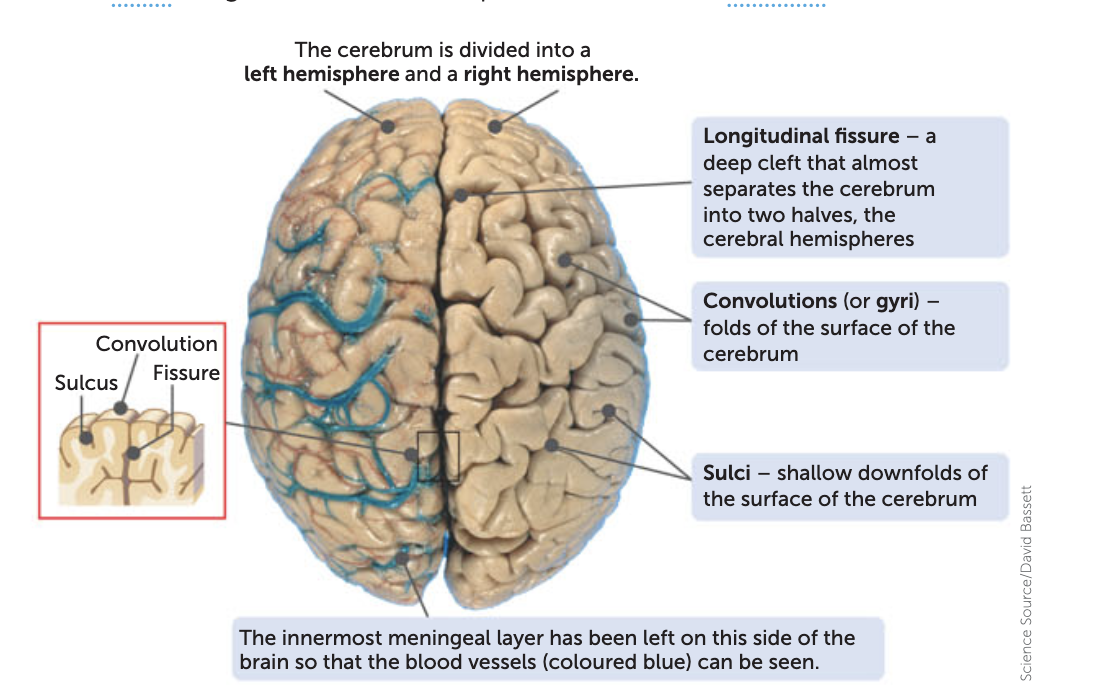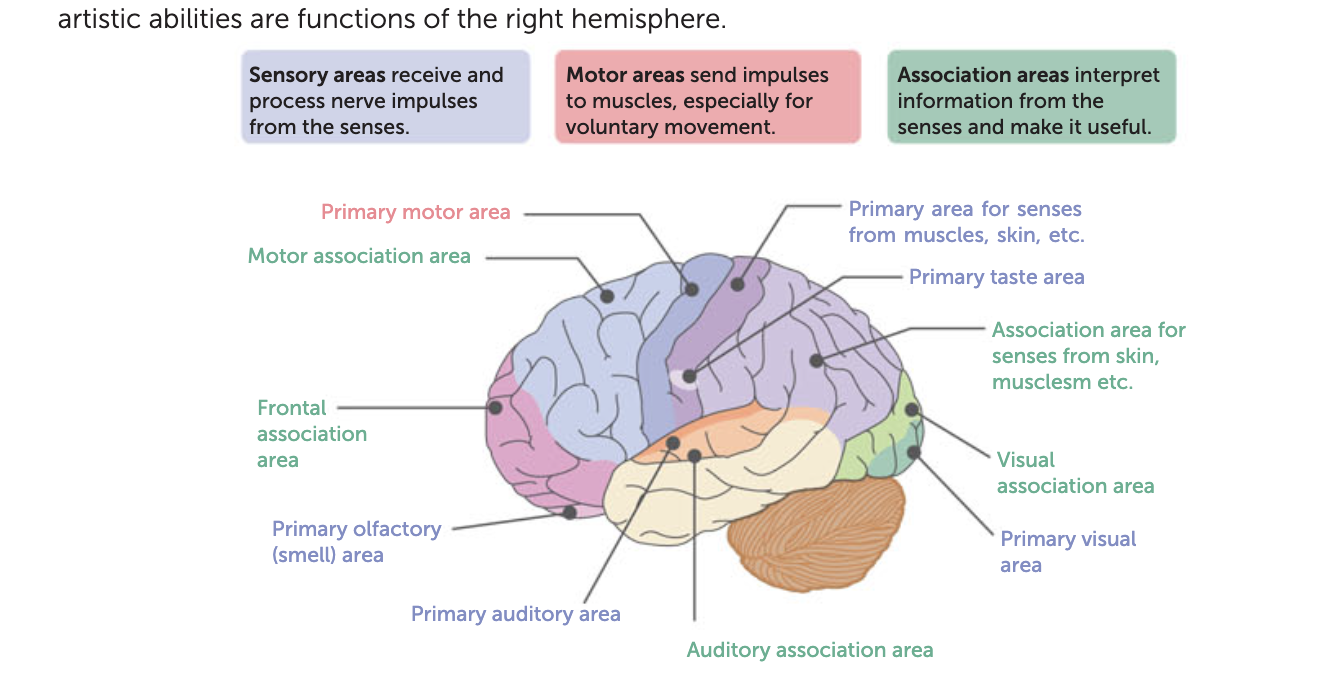4.1 Central Nervous System
nervous system = communication network and control centre of body
central nervous system (CNS) = brain and spinal cord, where incoming messages are processed and outgoing messages are initiated
peripheral nervous system (PNS) = nerves that connect CNS w/ receptors, muscles and glands
Protection of CNS
- bone
- membranes called meninges
- cerebrospinal fluid
1. Cranium and vertebrae
- cranium = part of skull that houses the brain
- vertebral canal = opening in the vertebrae through which the spinal cord passes
2. Meninges
- three layers of connective tissue forming membranes
- outer: dura mater, tough and fibrous, sticks closely to bones of skull, texture similar to household rubber glove
- middle: arachnoid mater, loose mesh of fibres
- inner: pia mater, delicate, contains blood vessels and sticks closely to surface of brain and spinal cord
3. Cerebrospinal fluid (CSF)
fluid produced in cavities of the brain; fills brain cavities and surrounds the brain and spinal cord
clear, watery fluid containing a few cells and glucose, protein, urea and salts
functions:
- Protection: acts as shock absorber, cushioning any blows or shocks to CNS
- Support: brain is suspended inside cranium and floats in fluid that surrounds it
- Transport: formed from the blood and circulates around and through CNS before re-entering blood capillaries - during this, it takes nutrients to the cells of the brain and spinal cord and carries away wastes
The brain
- works as an integrated whole
Cerebrum
- largest part of the brain; made up of left and right hemispheres
- cerebral cortex: outer later, made up of grey matter
- below cortex is white matter = myelinated axons
- fatty nature of myelin gives white matter its colour and texture
- basal ganglia: masses of grey matter inside each cerebral hemisphere
Cerebral cortex
- folded in patterns that increase SA
- cortex contains 70% of all the neurons in CNS
- convolution: upward fold of the cerebral cortex of the brain; also called gyrus
- sulci: shallow downfolds between convolutions of the cerebral cortex → deep down fold = fissure
- longitudinal fissure: longest fissure in brain; almost separates cerebrum into 2 halves (cerebral hemisphere: one of the 2 halves)

- fissures and sulci further subdivide each hemisphere into 4 lobes: frontal, temporal, occipital and parietal lobes
- insula: part of cerebrum that is buried deep inside brain; 5 lobe. of each cerebral hemisphere

| Lobe | Function |
|---|---|
| Frontal | Thinking, problem-solving, emotions, personality, language and control of movement |
| Parietal | Processing temp, touch, taste, pain and movement |
| Temporal | Processing memories and linking them with senses; receives auditory info |
| Occipital | Vision |
| Insula | Recognition of diff. senses and emotions, addiction and psychiatric disorders |
- cortex divided into 3 functional areas:
sensory: receive and process nerve impulses from senses
motor: send impulses to muscles, especially for voluntary movement
association: interpret info from senses and make it useful

Corpus callosum
- bundle of nerve fibres that link the 2 cerebral hemisphere - allow them to communicate
Cerebellum
- part of brain behind and below cerebrum; concerned with coordination of movement
- recieves sensory info from ear about posture and balance and stretch receptors in skeletal muscles for info about length of muscles
- we can still move w/o it but it would be jerky and uncontrolled
- outer folded part is grey matter, inside is white matter where it branches like a tree
- fine motor control
Hypothalamus
- lies below thalamus; helps maintain a constant internal environment by regulating heart rate, blood pressure, digestion, temp, water intake and emotions
Medulla oblongata
- joins to spinal cord
- cardiac centre: regulates heartbeat
- respiratory centres: regulates breathing rate
- vasomotor centre: regulates diameter of blood vessels
Brain diagram

Spinal cord
never cord that extends from brain to about waist level; enclosed in the vertebrae
contains myelinated fibres that take impulses towards the brain in the ascending tracts (sensory axons) and away from the brain in the descending tracts (motor axons)
bundles of nerve fibres = tracts, outside CNS = nerves


Structure and functions of main areas of CNS
| Structure | Function |
|---|---|
| Cerebral cortex | Higher-order functions such as thinking, reasoning, memory, learning, conscious awareness of surroundings |
| Corpus callosum | Communication between the 2 cerebral hemispheres |
| Cerebellum | Coordination of fine contractions of muscles resulting in smooth movements and the maintenance of posture and balance |
| Hypothalamus | Homeostasis; regulation of the heart, digestive system, appetite, thirst, metabolism, body temp, response to fear or anger |
| Medulla oblongata | Under influence of the hypothalamus, regulates the heart, breathing and diameter of blood vessels |
| Spinal cord | Provides a pathway for communication between muscles and glands and the brain; ingestion of automatic, protective reflexes |